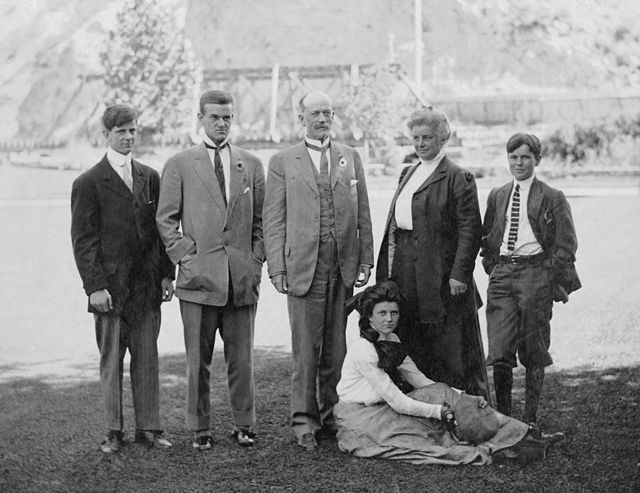Charles Doolittle Walcott
Charles Doolittle Walcott was an American paleontologist, administrator of the Smithsonian Institution from 1907 to 1927, and director of the United States Geological Survey. He is famous for his discovery in 1909 of well-preserved fossils, including some of the oldest soft-part imprints, in the Burgess Shale of British Columbia, Canada.
Charles Doolittle Walcott
Charles Doolittle Wallcott in 1873
Charles excavates the Burgess Shale (near Field, British Columbia) with his daughter and son, in the quarry which now bears his name.
Charles Doolittle Walcott and his family in Provo, Utah, around 1907. Walcott often took his family along on collecting trips. Click on the photo for more information about the Walcotts.
United States Geological Survey
The United States Geological Survey (USGS), founded as the Geological Survey, is an agency of the United States government whose work spans the disciplines of biology, geography, geology, and hydrology. The agency was founded on March 3, 1879, to study the landscape of the United States, its natural resources, and the natural hazards that threaten it. The agency also makes maps of extraterrestrial planets and moons based on data from U.S. space probes.
USGS headquarters in Reston, Virginia
A USGS gauging station on the Scioto River below O'Shaughnessy Dam near Dublin, Ohio
Clarence King, first director of the USGS from 1879 to 1881







